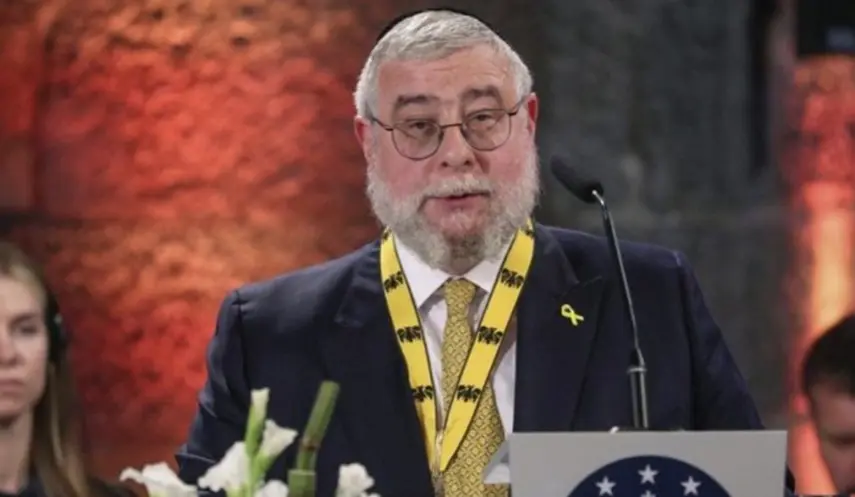VUJADINOVIĆ: STRUGGLE FOR TRUTH ABOUT HORRORS OF JASENOVAC – SECOND SERBIAN BATTLE OF KOSOVO
Republika Srpska – culture of remembrance
04/27/2025
10:11

BANJA LUKA, APRIL 27 /SRNA/ - Historian Željko Vujadinović told SRNA that the fight for the truth about the horrific crimes of the Jasenovac Ustasha death camp represents the "second Serbian battle of Kosovo."
Vujadinović also emphasized that, in the past 30 years, there has been a negative historical revisionism regarding the Independent State of Croatia /NDH/ and the Jasenovac Ustasha camp system, stressing that we should oppose such processes with truth and justice.
"Everything must be based on truth and justice. Any thought of revenge would exclude the Serbian people from history. Only through a system of truth and justice should we discuss Jasenovac and the NDH," emphasized Vujadinović.
When it comes to nurturing the culture of remembrance of the suffering in the NDH and the Jasenovac camp, Vujadinović says that truth defines the culture of remembrance, noting that Jasenovac is woven into the Serbian, Jewish, and Roma national thought.
"During the time of the former Yugoslavia, all crimes were referred to as acts of fascist terror. When the victims and perpetrators of the crimes were nameless, it created an abstraction of how they occurred," Vujadinović believes.
Vujadinović says that today, the culture of remembrance involves not only respect for the victims but also a comprehensive understanding of how the crime was even possible and what its causes were.
He says that Jasenovac was a death camp where the basic postulates of the NDH were to be carried out, namely, an ethnically and religiously pure state.
Serbs, Jews, and Roma, Vujadinović reminded, had no place in the NDH, nor did all opponents of that regime.
Vujadinović noted that the formation of the NDH and the Jasenovac camp were a consequence of the development of religious intolerance and the formation of identity based on that, as well as the promotion of the idea of racial superiority.
"Concentration camps were fundamentally different from prisons, where individuals are sent based on judicial verdicts, while in concentration camps, large groups of people were sent without a court verdict based on some identity criterion, whether as political opponents or war prisoners," Vujadinović said.
Vujadinović reminded that there were 30 different camps in the NDH alone, emphasizing that the NDH also had camps for children up to 14 years old in Jasterbarsko near Zagreb and Sisak, where around 20,000 children were killed.
"The scale of the crime excludes any possibility that Jasenovac was the result of historical coincidence. Jasenovac was a death camp, and it has deep historical roots. The establishment of the camp was possible because the environment for it had already existed," emphasized Vujadinović.
On the occasion of the commemoration of the Day of Remembrance for the victims of genocide against Serbs, Jews, and Roma in the NDH /1941-1945/ and the 80th anniversary of the breakout from the Jasenovac concentration camp, Vujadinović reminded that Donja Gradina is the largest execution site of the Jasenovac Ustasha death camp system.
Tags

GOLDSCHMIDT: STILL WAITING FOR APOLOGY FROM BiH AUTHORITIES

POSSIBLE COOPERATION BETWEEN ALMAZOV RESEARCH CENTRE AND UNIVERSITY CLINICAL CENTRE

SARAJEVO "TROIKA" WANTS TO WEAKEN SNSD - THE BIGGEST OBSTACLE TO UNITARY BiH



